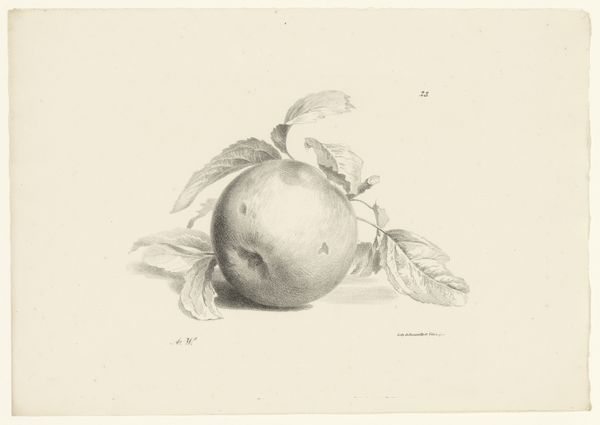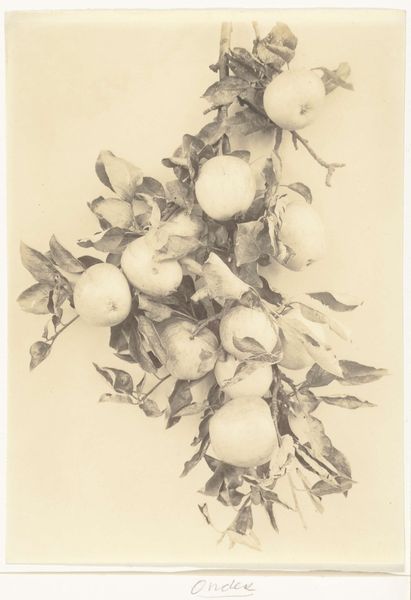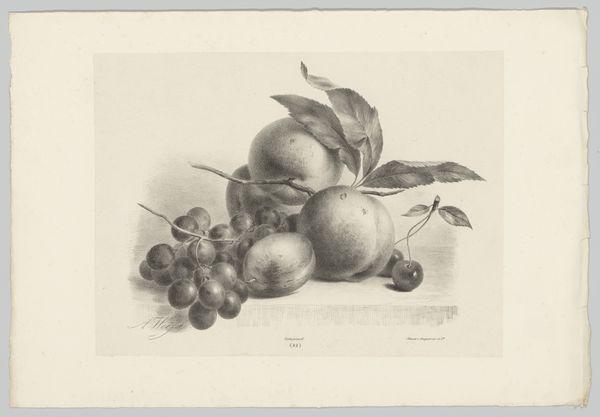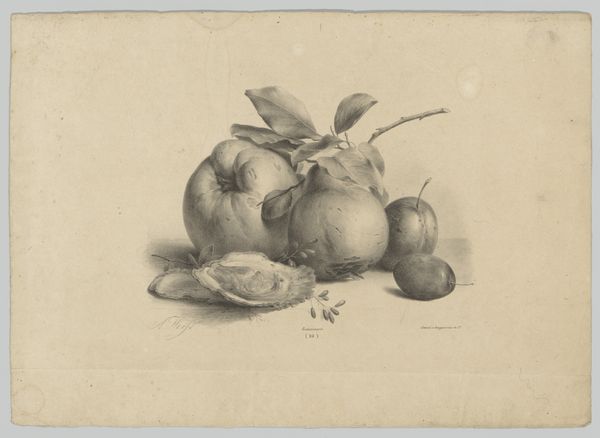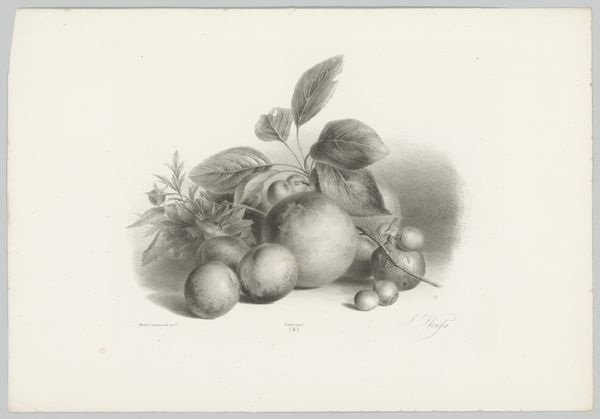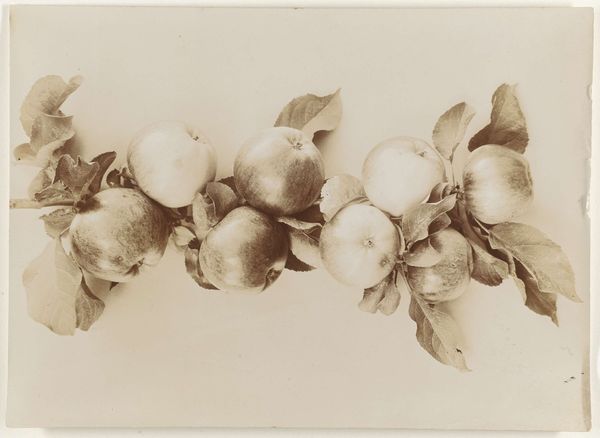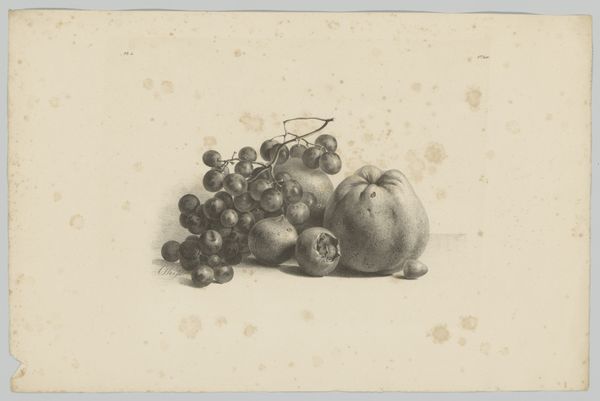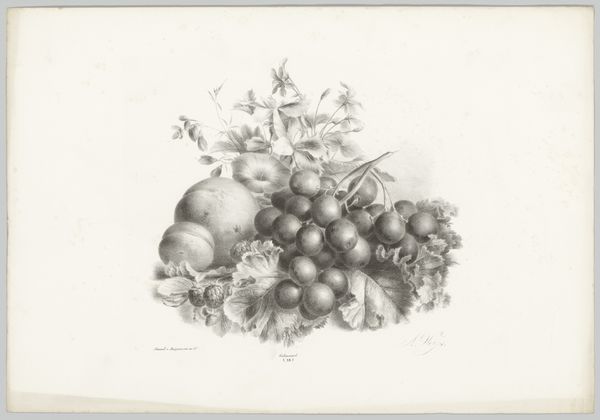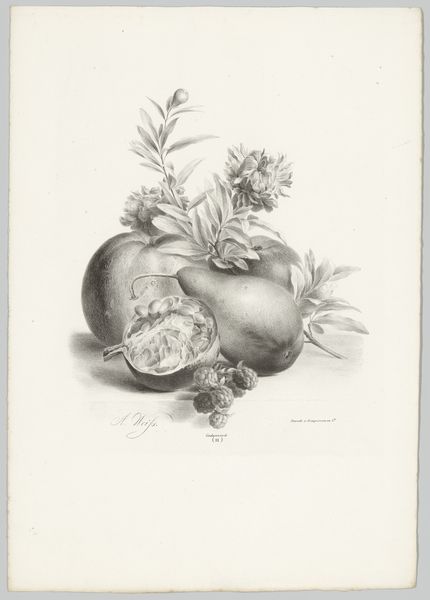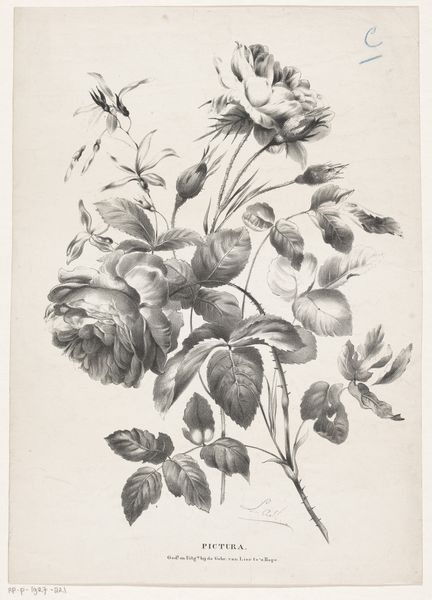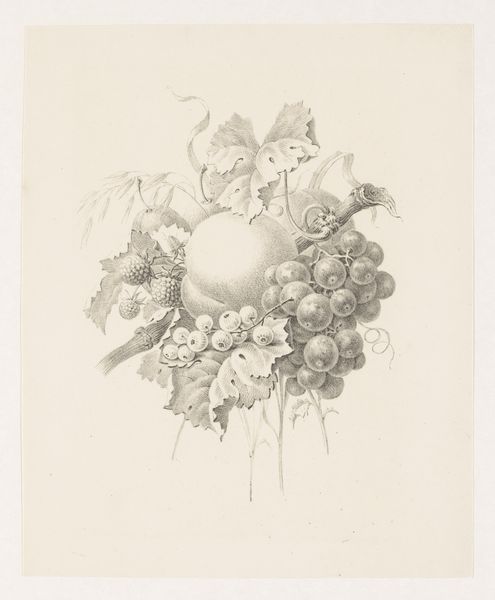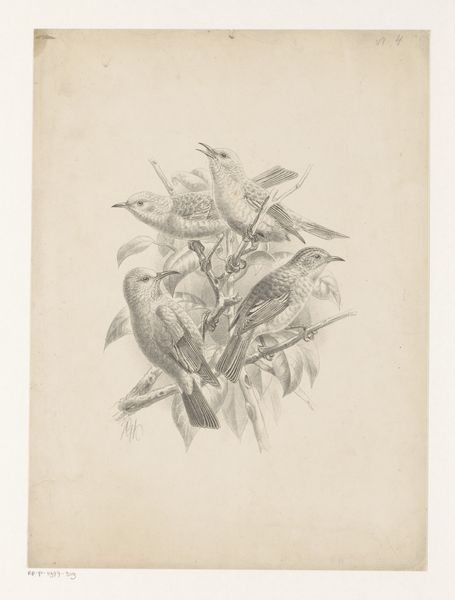
drawing, pencil
#
pencil drawn
#
drawing
#
light pencil work
#
pencil sketch
#
landscape
#
form
#
pencil drawing
#
fruit
#
pencil
#
line
#
pencil work
#
realism
Dimensions: height 241 mm, width 340 mm
Copyright: Rijks Museum: Open Domain
Curator: Here we have "Sinaasappel," a pencil drawing by Anton Weiss, created sometime between 1831 and 1832. It's part of the Rijksmuseum's collection. Editor: My immediate impression is one of stillness. The delicate shading and composition create a rather tranquil atmosphere, despite the simplicity of the subject. Curator: Precisely. Weiss's technique here emphasizes form above all else. Look at the way he uses subtle gradations of tone to describe the volume and texture of the orange and leaves. The light catches the fruit just so. Editor: I find myself considering the act of drawing itself, the labor and the time invested in rendering something so seemingly commonplace with such meticulous detail. This speaks volumes about artistic training during that period. What was Weiss aiming to convey through such labor-intensive practice? Curator: Perhaps an exploration of the inherent beauty in the everyday. The focus on verisimilitude highlights the inherent structure—the geometric perfection of the orange, contrasted with the more organic shapes of the leaves. He is engaging with philosophical ideas on the nature of beauty and its connection to mathematical principles. Editor: I wonder about the availability and consumption of oranges during this period. They would have likely been a luxury, and so capturing this object reflects broader themes around commerce, global exchange, and colonial impact in what might seem an innocent, isolated still life. Curator: It’s fascinating to consider that what we read as simple observation is, in reality, infused with the socio-economic fabric of its time. The piece is both simple and resonant with more profound meaning. Editor: Ultimately, viewing this work has brought up fascinating perspectives, encouraging a dialogue between its formal components and its material history. Curator: It certainly proves the ability of a humble pencil drawing to spark such divergent but related narratives and questions. A testament to the potency of simple materials to elicit complex concepts.
Comments
No comments
Be the first to comment and join the conversation on the ultimate creative platform.
